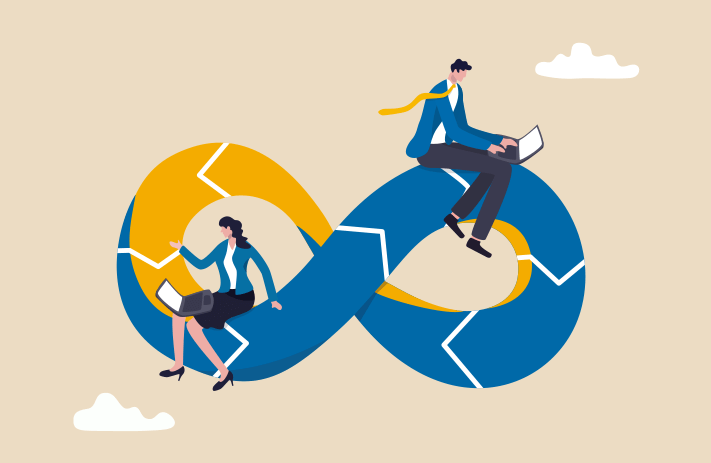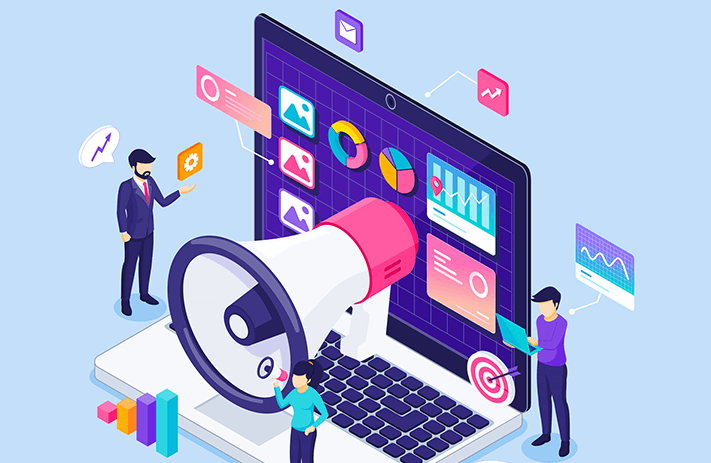
Click the button to start reading
How to Make the Most Out of Agile SDLC For Your Project Management Workflow
The Agile methodology is quickly gaining in popularity due to its ability to adapt to changing requirements and fast-paced work environments.
Agile SDLC, or Agile Software Development Life Cycle, is a variation of the Agile methodology that is specifically tailored for software development projects. As with any new methodology, there can be a bit of a learning curve when transitioning to Agile SDLC. However, once you get the hang of it, Agile SDLC can be an extremely effective way to manage your software development projects.
If you’re looking to make the most out of Agile Software Development Life Cycle (SDLC) for your project management workflow, but don’t know how? Don’t worry, we got you covered. In this article, we’ll give you an overview of what Agile SDLC is, how it can benefit your project management workflow, and some tips on getting started.
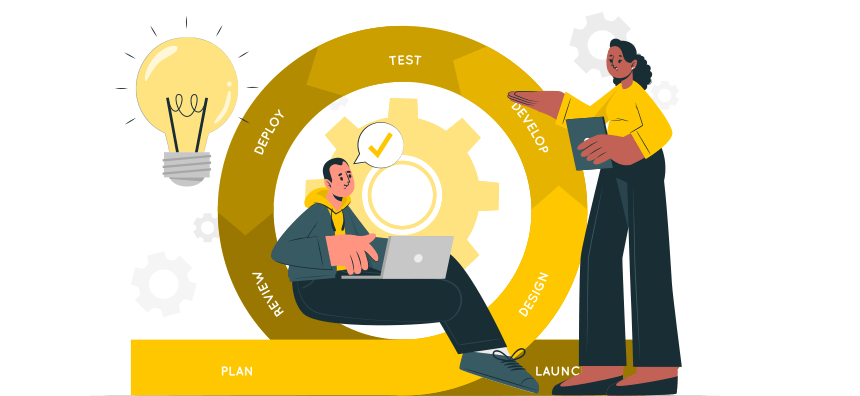
Everything you need to know about Agile SDLC
What is Agile SDLC?
In general Agile is a method of software development that emphasizes collaboration, customer feedback, and flexible responses to change. The Agile Manifesto, written in 2001, outlines 12 principles that guide the Agile process.
The Agile Software Development Life Cycle (SDLC) is a collection of standards and best practices for applying Agile methods in software development. It’s based on the idea of incremental development, where tasks are completed in small steps or “sprints” instead of all at once. This allows for more flexibility and frequent feedback, which can help avoid costly mistakes.
SDLC Models: Concept and Essentials
Agile is only one of many software development life cycle (SDLC) models. Others include Waterfall, Spiral, and Kanban. Each model has its advantages and disadvantages, so it’s important to choose the right one for your software development team and process.
The Agile methodology is well suited for projects that are likely to experience changes in scope or requirements. It’s also a good choice if you need to move quickly and don’t have time to complete all tasks upfront.
The waterfall model, on the other hand, is better suited for projects with well-defined requirements that are unlikely to change. This model focuses on completing tasks in a linear fashion, which can help avoid confusion and errors.
Kanban is a newer methodology that is similar to Agile in that it emphasizes flexibility and customer feedback. However, Kanban uses a different approach to task management, which can be helpful if you’re looking for an alternative to Agile.
Spiral is another option that combines elements of both Agile and waterfall. It’s often used for projects that are considered high-risk, such as those with new or untested technologies.
What distinguishes Agile SDLC from other Methodologies?
One of the key distinguishing factors of Agile SDLC is its emphasis on collaboration. Agile teams work closely together to complete tasks and make sure everyone is on the same page. This can help avoid misunderstandings and mistakes.
Another key difference is the way Agile handles changes. In Agile, changes are expected and accommodated. This is in contrast to other SDLC models, which may view changes as disruptive.
Agile also uses a different approach to task management. In Agile, tasks are divided into small pieces, or “sprints.” This allows for more frequent feedback and makes it easier to make changes if necessary.
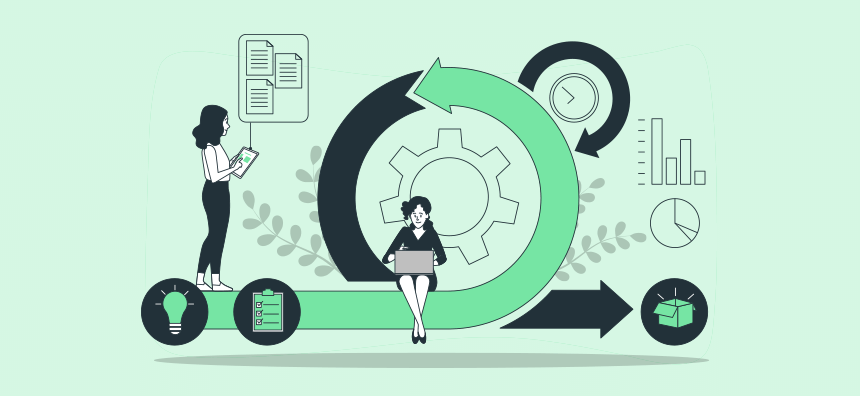
What are the phases of SDLC
There are six phases in the software development life cycle (SDLC), including:
Phase 1 – Planning and Analysis
The SDLC has two stages: the planning stage, in which you’re obtaining needs from your client or stakeholders, and the requirement analysis stage, in which you’re investigating whether or not it’s feasible to build the product.
Whether your project is a go is contingent on many factors, some of which Agile aims to weed out during this phase: unrealistic timelines, inadequate resources, and scope creep. This is where you’ll also develop your product roadmap and high-level requirements.
If you’ve decided that the program or upgrade is suitable for your organization, stakeholders, and end-users, you may go to the second stage.
Phase 2 – Design
In the design stage, the focus is on how the product will be built. The objective is to come up with a detailed plan or blueprint of the software that will guide developers in building it.
The design should take into consideration factors such as performance, security, usability, scalability, and maintainability. This is also the phase where you decide on the technology stack that will be used.
Phase 3 – Implementation or Development
This is the stage where the actual software is coded. The development team takes the design created in the previous stage and turns it into a working product.
They write code, test it, fix bugs, and repeat this cycle until the software is ready for release. Depending on the programming language used, the code can be written in a procedural or object-oriented approach.

Phase 4 – Testing
After the software is coded, it needs to be thoroughly tested before it can be released. Testing helps identify bugs and errors so they can be fixed. It also verifies that the software meets the requirements specified in the planning and analysis stage.
There are various types of testing, such as functional testing, usability testing, security testing, compatibility testing, and more.
Phase 5 – Deployment
Deployment is the process of making the software available to users. This can involve installing it on a server, making it available for download, or shipping it on a physical medium like a DVD.
The deployment also includes creating documentation and training materials. After the software is deployed, it’s important to monitor its performance and gather feedback so that any necessary changes can be made.
Phase 6 – Maintenance
Once the software is up and running, it needs to be maintained. This includes making sure that it continues to work as expected, fixing bugs and errors, and adding new features or updates.
The maintenance phase can last for the lifetime of the software. Agile SDLC is a continuous cycle so, after each release, the software goes back to the beginning of the cycle to plan for the next release.

The 3 biggest reasons why you should care about Agile SDLC.
There are many reasons why you should care about Agile SDLC, but here are three of the most important ones:
Agile SDLC is adaptable: One of the most appealing aspects of Agile is its ability to adapt to changing requirements. This is possible because Agile focuses on delivering completed tasks in small increments, which allows for more flexibility when changes need to be made.
Agile SDLC is customer-centric: Agile puts the customer at the center of the development process, which means that their feedback is essential to the success of the project. This helps ensure that the final product meets their needs and expectations.
Agile SDLC is fast-paced: Agile is designed for fast-paced work environments, which can be a major advantage if you’re working on a tight deadline. This is because Agile allows you to start seeing results early on and make changes as needed, instead of waiting until the end of the project.

10 advantages to adopting an Agile SDLC for your projects.
Not only is SDLC Agile adaptable, customer-centric, and fast-paced, but it also offers many other advantages. Here are 10 of the most notable ones:
- Increased flexibility – By working in sprints, you can adapt more easily to changes in scope or requirements.
- Improved communication – Because Agile relies on constant communication between team members, stakeholders, and customers, everyone is always on the same page.
- Easier collaboration – Due to the increased communication, it’s also easier to collaborate with team members and stakeholders.
- More accurate estimates – Since Agile is based on actual data and feedback, rather than assumptions, you can make more accurate estimates of time and resources.
- Faster delivery of products and services – Agile’s iterative approach means that you can get products and services to market faster.
- Greater customer satisfaction – Agile’s focus on customer feedback means that you’re more likely to deliver what they want.
- Better ROI – Agile’s focus on delivering value early and often means that you’re more likely to see a return on your investment.
- Reduced stress and anxiety for team members – Agile’s focus on constant communication and collaboration means that team members are less likely to feel isolated or anxious.
- Fewer defects in products or services – Agile’s focus on quality means that you’re less likely to ship products or services with defects.
- Increased visibility into the project – Agile’s focus on communication and collaboration means that everyone has a clear understanding of the project’s progress at all times.
An Agile SDLC has many benefits that can improve the way your team works together and gets things done. If you’re looking for a more flexible, communication-focused approach to software development, Agile is worth considering.

What are some of the challenges of using Agile SDLC?
One of the challenges of using Agile SDLC is that it can be difficult to get started. Agile SDLC requires regular communication and collaboration, which can be tough if your team is not used to working in this way.
Another challenge of using Agile SDLC is that it’s important to be flexible and adapt as needed. The process is iterative, which means that you’ll need to course-correct as necessary. This can be difficult if you’re not used to making changes on the fly.
Finally, Agile SDLC requires customer feedback to be successful. This can be tough to get if you don’t have a good relationship with your customers.
How can you overcome the challenges of using Agile SDLC?
One way to overcome the challenges of using Agile SDLC is to start small. If you’re not sure how your team will react to the process, try implementing it on a smaller scale first. This will give you a chance to work out any kinks before you roll it out to your entire team.
Another way to overcome the challenges of using Agile SDLC is to be prepared to make changes. Agile SDLC is an iterative process, which means that you’ll need to course-correct as necessary. Be prepared to make changes to your process as needed to improve your team’s workflow.
Finally, make sure that you’re regularly getting feedback from customers. Agile SDLC relies on customer feedback to help improve the product or service that you’re delivering. Without this feedback, it will be difficult to make changes and improve your workflow.
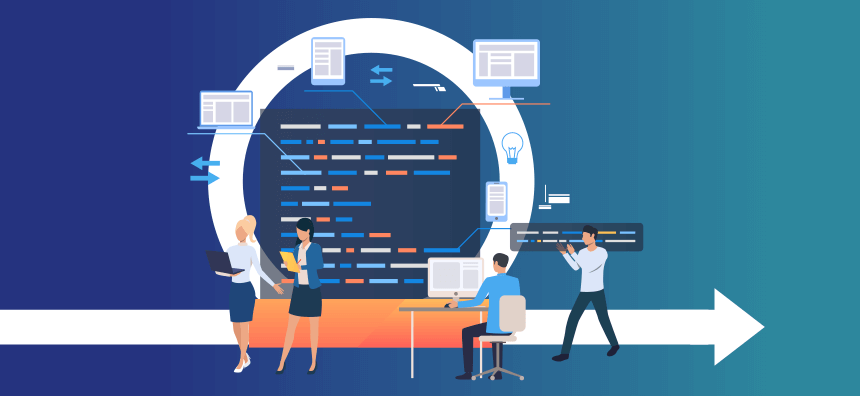
How to create an effective Agile SDLC process for your team:
Once you choose to use the Agile software development life cycle, you need to understand how to implement it effectively for your team. Here are some tips:
- Internalize the values and principles to shift your mindset
- Commit to the transition as a whole
- Define the goals and objectives of the project
- Create a project roadmap
- Plan the sprint length and release schedule
- Create detailed user stories
- Establish a daily stand-up meeting
- Test the Iteration with your stakeholders
- Get feedback from customers
- Course correct as needed
Internalize the values and principles to shift your mindset:
One of the most important things you can do is to internalize the values and principles of Agile. This means understanding that Agile is not just a process or set of tools, but a way of thinking about and approaching work.
Agile teams need to be able to move quickly and adapt to change, which means that team members need to be open to new ideas and ways of doing things. If you’re not sure where to start, the Agile Manifesto is a good place.
Commit to the transition as a whole:
Transitioning to Agile is not something that you can do half-heartedly. Agile requires buy-in from everyone on the team, from the project manager to the developers to the stakeholders.
Without this commitment, Agile will not be successful. Make sure that everyone on the team is on board with the transition and understands what it will entail.
Define the goals and objectives of the project:
Before you can start working in sprints, you need to define the goals and objectives of the project. What are you trying to achieve? What are your success criteria?
If you’re not sure where to start, try brainstorming with your team or conducting a stakeholder analysis.
Create a project roadmap:
Once you know the goals and objectives of the project, you need to create a roadmap that will guide you from start to finish. This roadmap should include milestones for each sprint and a timeline for when each deliverable will be completed.
This helps agile teams focus on the most important tasks and ensures that everyone is always aware of the project’s progress.

Plan the sprint length and release schedule:
When creating an Agile SDLC process for your project management team, you need to decide on the length of your sprints and the frequency of your releases.
A sprint, in the context of Agile projects, is defined as a set timeframe (usually 2-4 weeks) during which a specific goal is accomplished. A release is defined as a collection of sprints that together complete a larger goal.
You should base the length of your sprints and releases on the specific needs of your project. For example, if you’re working on a large project with many stakeholders, you might want to have longer sprints so that you can get more work done and get feedback from stakeholders more often.
But if you’re working on a smaller project with fewer stakeholders, shorter sprints might be more effective so that you can make changes more quickly.
Once you’ve decided on the length of your sprints and releases, you need to communicate this to your team so that everyone is on the same page.
Create detailed user stories:
In Agile SDLC user stories can help define project requirements. A user story is a brief description of a feature from the perspective of the person who will be using it.
For example, if you’re working on a project management tool, one user story might be “As a project manager, I want to be able to create tasks and assign them to team members.”
User stories should be specific, brief, and easy to understand. They should also be written from the perspective of the user.
Creating user stories can help your team to better understand the goals of the project and what needs to be done to achieve those goals.
It’s also a good idea to create acceptance criteria for each user story. Acceptance criteria are a set of conditions that must be met for a user story to be considered complete.
For example, the acceptance criteria for the above user story might be “The task creation feature must allow me to create a task, assign it to a team member, and set a due date.”
Creating acceptance criteria can help to ensure that your team is on the same page about what needs to be done to complete a user story.

Establish a daily stand-up meeting:
One of the most important aspects of Agile SDLC is communication. To ensure that everyone is on the same page, you need to establish a daily stand-up meeting.
During a stand-up meeting, each team member should briefly answer three questions:
What did you do yesterday?
What will you do today?
Are there any impediments in your way?
The purpose of a stand-up meeting is to ensure that everyone is aware of what everyone else is doing and to identify any potential problems that need to be addressed.
Stand-up meetings should be brief, no more than 15 minutes. And they should be held at the same time and place every day so that everyone can get into the habit of attending.

Test the Iteration with your stakeholders:
Remember an iteration is a timebox where you complete a set amount of work within a specified timeframe.
At the end of each iteration, it’s important to test the work that has been completed with your stakeholders. This will help to ensure that the work is on track and that stakeholders are happy with the progress.
Testing can be done in several ways, but the most important thing is to get feedback from your stakeholders. ou can use a tool like Google Forms or any other Google Forms alternatives to create a survey that you send to stakeholders at the end of each iteration.
Or you can schedule a meeting with stakeholders to review the work that has been completed and get their feedback. Whichever method you choose, it’s important to get feedback from your stakeholders regularly.
Get feedback from customers:
In addition to getting feedback from your stakeholders, it’s also important to get feedback from customers. Customer feedback can be used to improve the product or service that you’re delivering. It can also help to identify any areas where your team might need to make changes.
There are several ways to get feedback from customers. You can send out a survey, conduct interviews, or even just ask for feedback in person. The most important thing is to make sure that you’re regularly getting feedback from customers and using it to improve your product or service.
Course correct as needed:
Agile SDLC is an iterative process, which means that you’ll need to course-correct as necessary. If your team is not meeting its goals, if stakeholders are unhappy with the progress, or if customers are giving negative feedback, then you’ll need to make changes. The most important thing is to be flexible and adapt as needed.
Summary
Agile SDLC is a great way to improve your project management workflow. The principles of communication, collaboration, and customer feedback can help ensure that your project is on track and that stakeholders are happy with the progress.
However, Agile SDLC can be difficult to get started, and it’s important to be prepared to make changes as needed. With a little bit of planning and preparation, you can overcome the challenges of using Agile SDLC and improve your team’s workflow.

